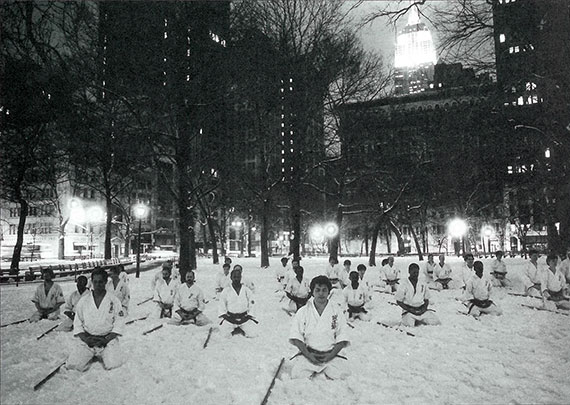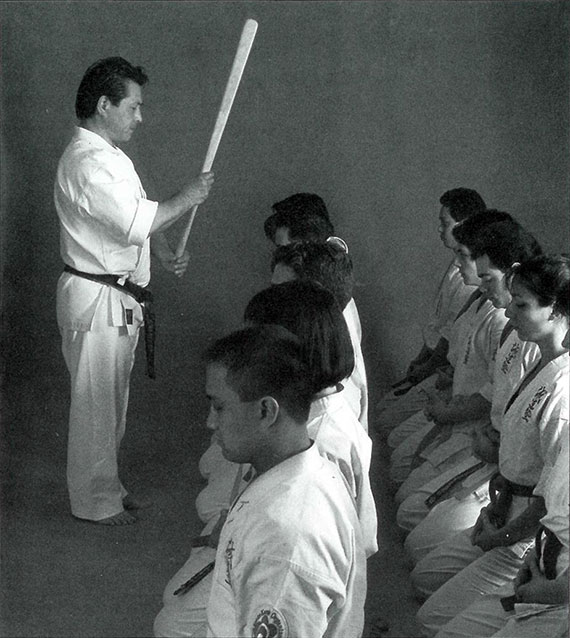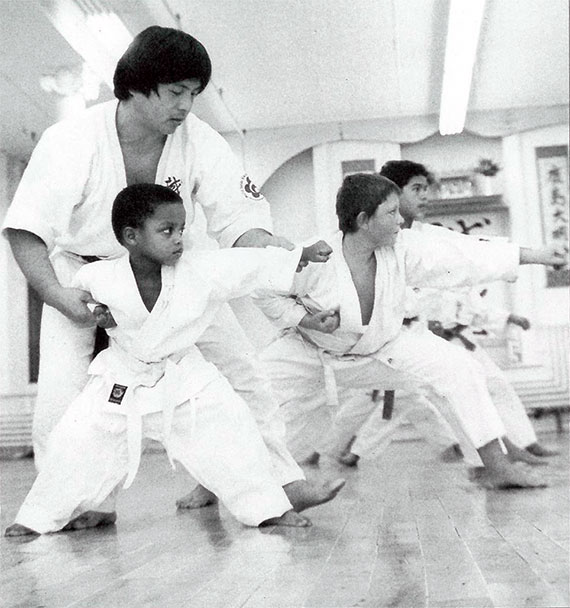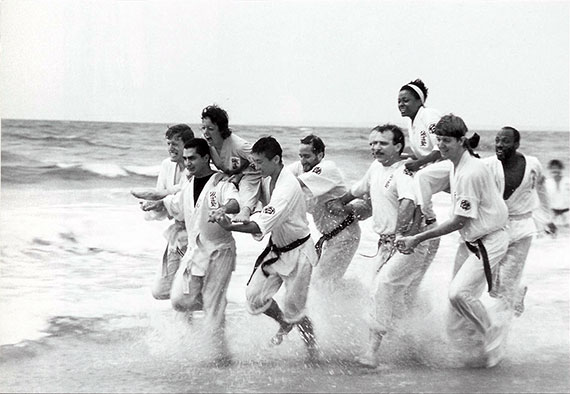Bodhidharma, the twenty-eighth in line of succession from Shakyamuni Buddha, traveled to the Shaolin Monastery in China to spread the word of Buddhism in 520 C.E. During his self-imposed nine-year period of meditation there, he developed a series of physical movements used both for exercise and for defending himself against wild animals. These techniques of moving meditation were passed on to the Shaolin monks who incorporated them into their spiritual training. This was the origin of martial arts, a powerful and complete way of being.
In the sixth century, Buddhism arrived in Japan. Later, in the thirteenth century, Rinzai Zen was brought to Japan from China, and Soto Zen arrived there from China with Dogen Zenji. In the seventeenth century, the samurai incorporated Rinzai Zen along with the martial arts into the Way of the Warrior (bushido), When the samurai class was in power, it was highly cultured, steeped in the study of Buddhism as well as painting, poetry, calligraphy, and literature. The bond between Zen, particularly Rinzai Zen, and the bushido reached its zenith following the end of the nineteenth century. This connection, however, was broken after World War II. Without its spiritual core the martial arts dissolved into a sport and a system of self-defense.
In response to this, Kaicho (Grand Master) Tadashi Nakamura, ninth-degree black belt, founded Seido Karate, an international network of more than 100 dojos (schools) around the world. Headquartered in New York, Seido (which means the sincere way) emphasizes rigorous technique, Zen meditation, compassion, and community involvement. Seido schools sponsor karate training for the blind, deaf, and devlopmentally disabled. Every year, benefit tournaments are held to raise money for various charities such as those for children with HIV and victims of domestic abuse. During the holiday season, students participate in walking meditation and feeding the homeless. In summer, students make an annual pilgrimage to the beach to train in the surf.
“Many people think the martial arts are completely separate from life,” Kaicho explains. “They are not. They are the same. Karate-do is a way of being which must be experienced by each individual in his or her own unique way. Its goal is to train the body, mind, and spirit in order to realize the fullness of human potential. Karate is not a sport. There is no competition with others. The real competition is with the self. Karate, like life, which it mirrors, is a struggle: a struggle with our own weakness, with our egos and our selfishness, with our narrow-mindedness and prejudices.”

Madison Square Park, New York City
The Dojo (Place of Enlightenment) is not just a social club or gym or exercise place. It is always with us no matter where we are, and we cannot be one person outside the dojo and another when we train. The dojo is a mirror of life. When we train, we can see our attitudes toward life and other people emerge very clearly. We are at the dojo to study ourselves.

At the New York zendo
The way of the budo (martial arts) is mostly about discipline that teaches you to respect yourself and others, to appreciate what you have. We bow at the beginning and the end of each class to show respect to the dojo, to the instructors, and to the students. In karate, bowing has a deeper symbolism. When we bow, we are pulling on the bridle of our own egos. We strike a blow at the ego, which separates us from others and from our real self. In the dojo we are looking to shed old skin for new in a constant process of physical, mental, and spiritual growth.

Kaicho instructs young Seido students.
Kumite (sparring) is not just about fighting with an opponent; it is not adversarial. When you are fighting, how you feel your opponent’s mind, how you accept his or her mind, and how you can deal with his or her mind, these are the most important aspects of kumite. Controlling the mind is perhaps the most difficult aspect of karate, whether in zazen or kumite.

Summer training at Rockaway Beach
In Seido we strive to find the right individual balance. A karate-ka (student of karate) must learn and understand selflessness, how to have a more open heart, to think about what he or she can do for other people. Karate, through the practice of zazen, makes us look at ourselves. If we do this sincerely, we find our beautiful human core. To find this inner core we will have to wipe away many layers of dust and dirt that cloud the bright surface of what the Zen masters call our ‘mirror mind’ or Buddha nature. The Zen masters say we shall see no separation; there is no self, no other.